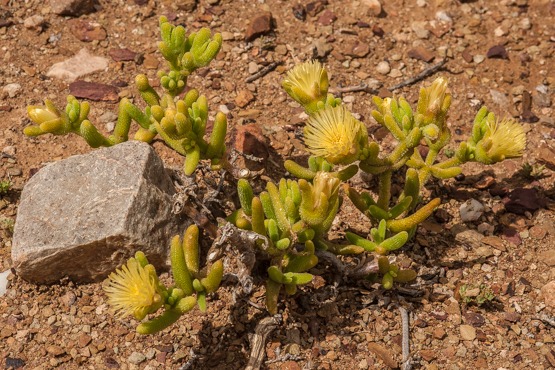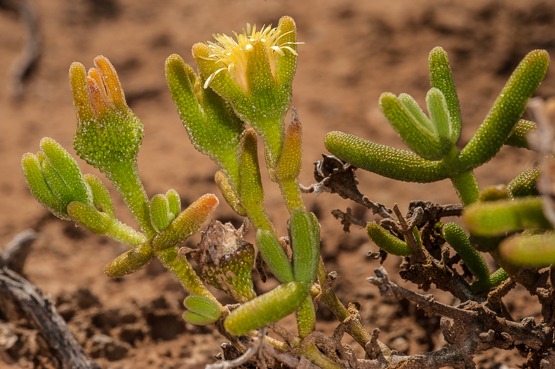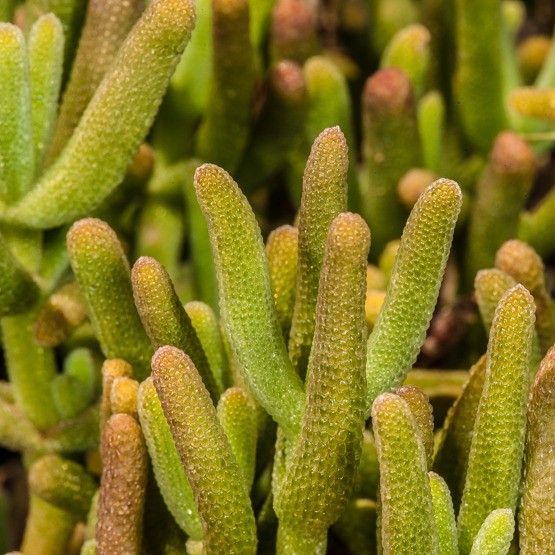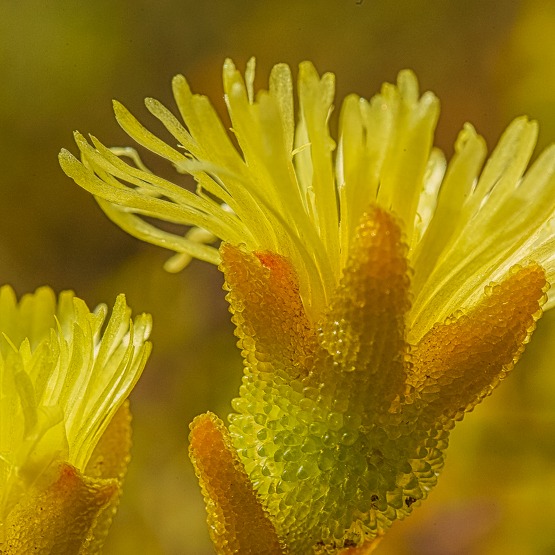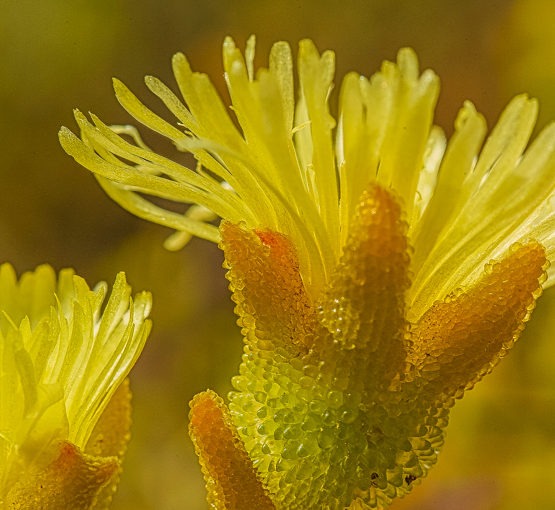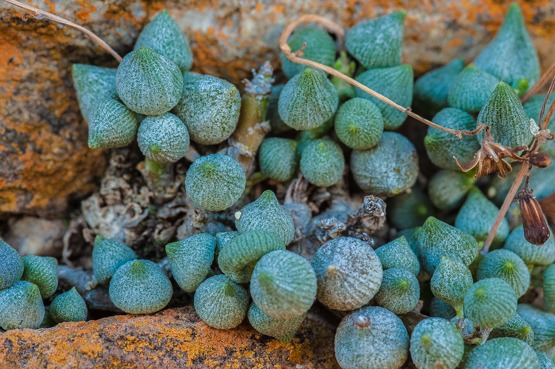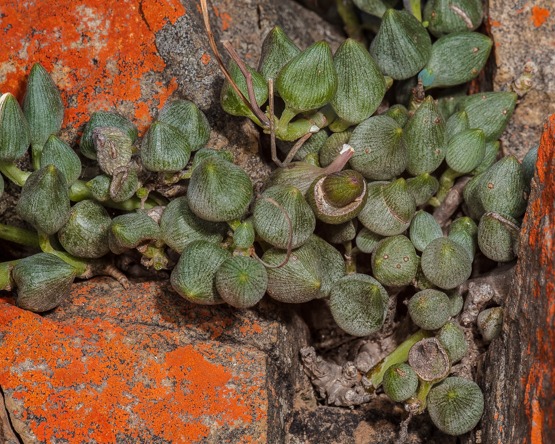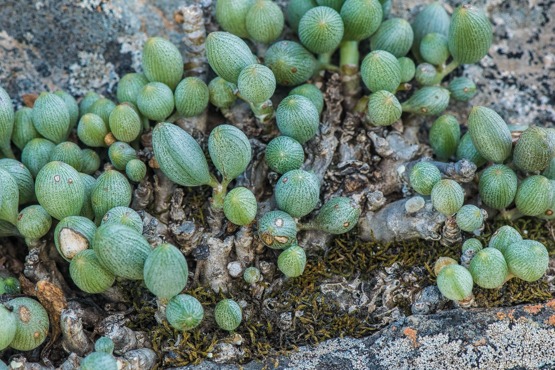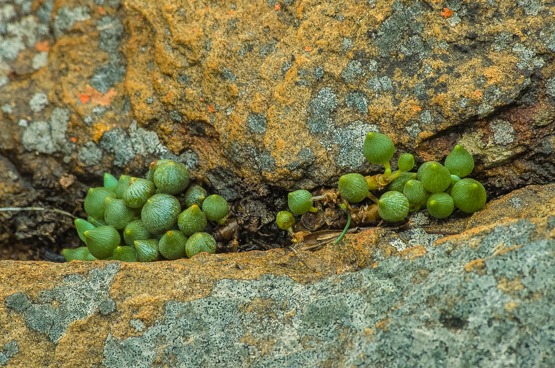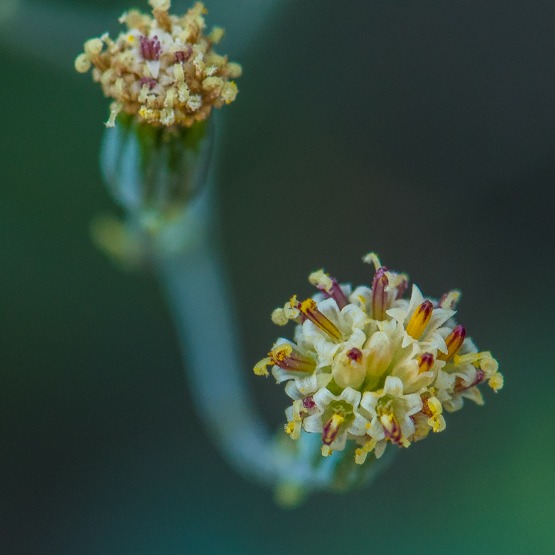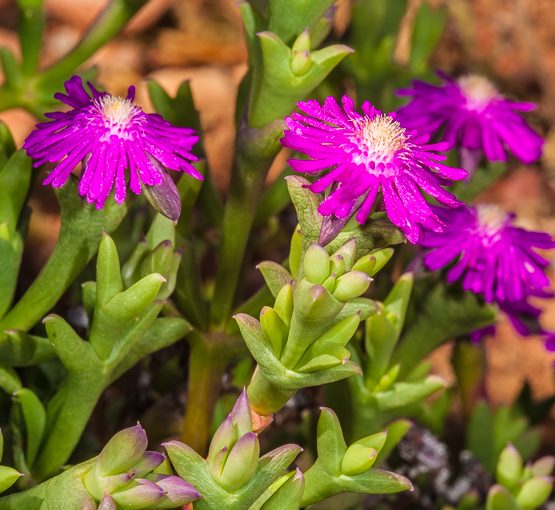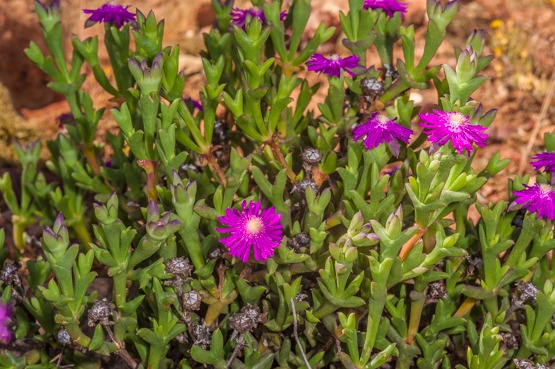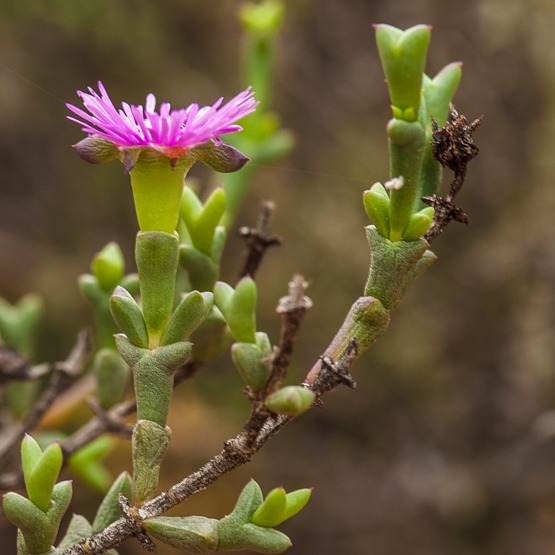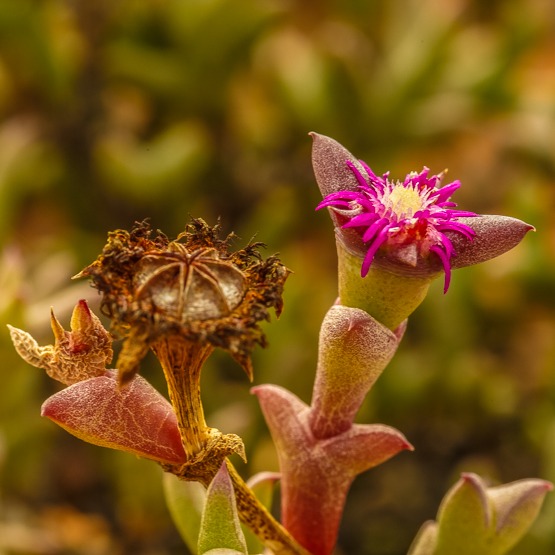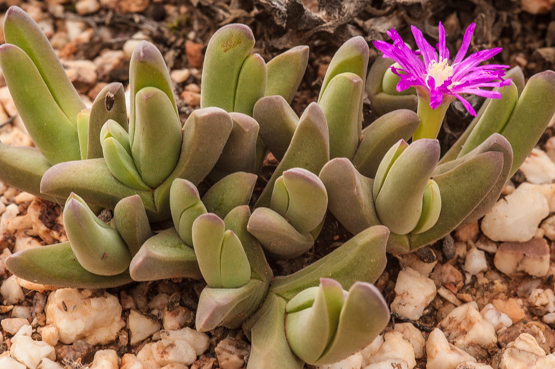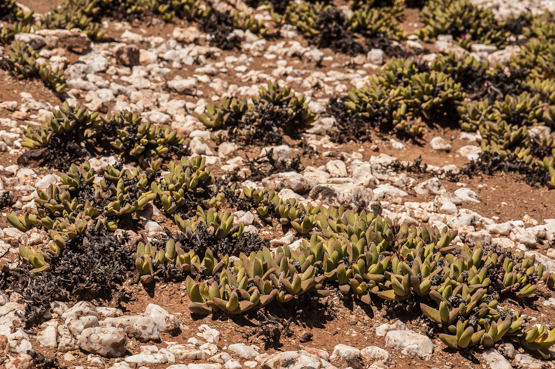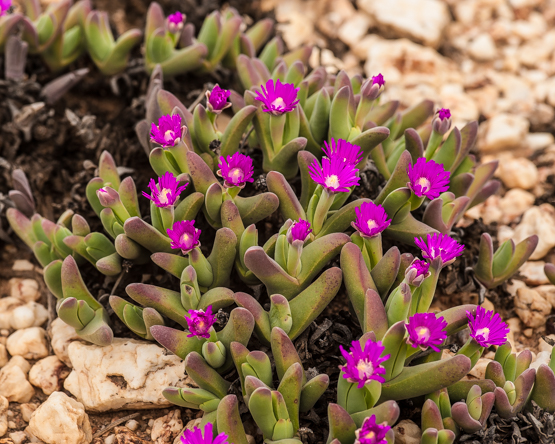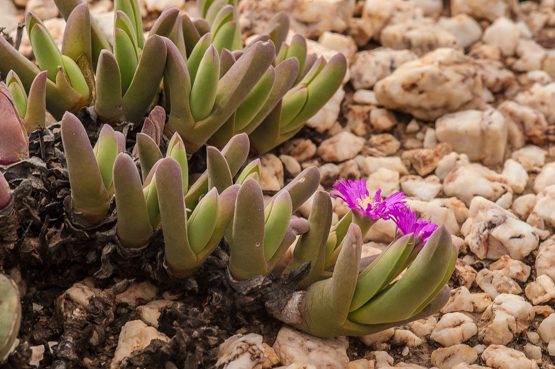Usually this is a low shrub up to 30 cm tall, but sometimes it has a different growth form (ranging from cushion-like to scrambling).
Its stems are weakly woody and have a conspicuous cork layer.
The yellow-green leaves are 4-ranked and almost cylindrical, with conspicuous and usually large bladders cells.
The flowers are 2-3.5 cm in diameter, pale yellow, sometimes pale pink or salmon; they appear in August-October and produce capsules with 4- to 5 compartments
Widespread on dry flats from Kenhardt and Gamoep via Vanrhynsdorp and Calvinia to Swellendam and Prince Albert.
